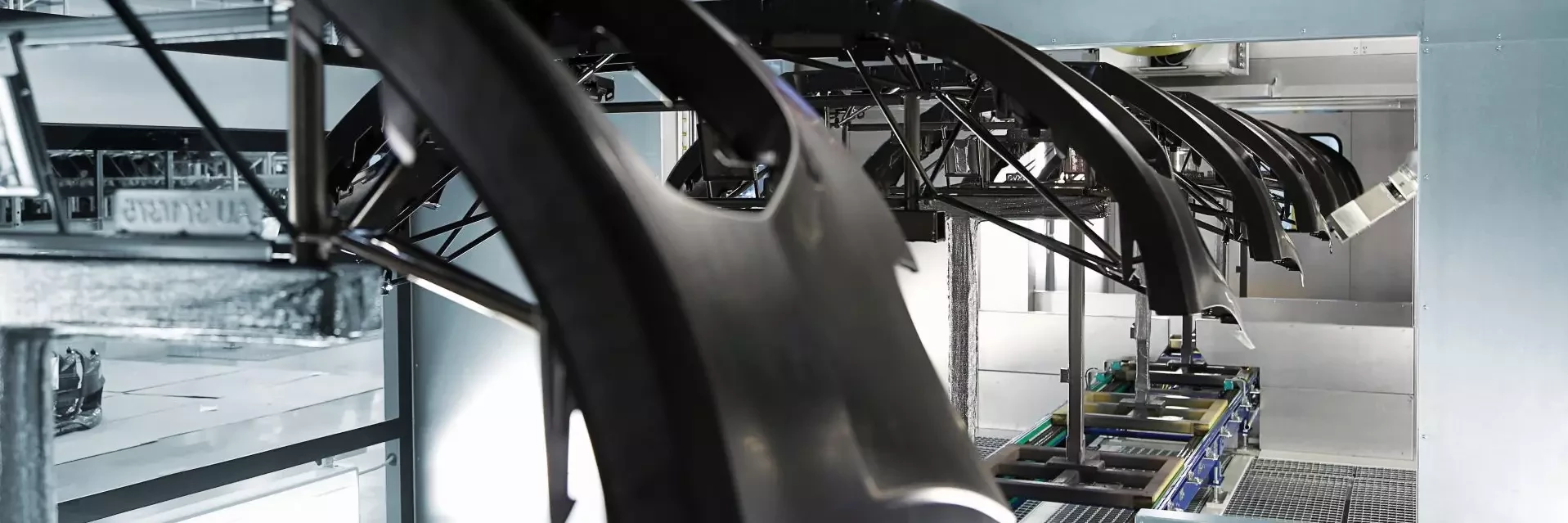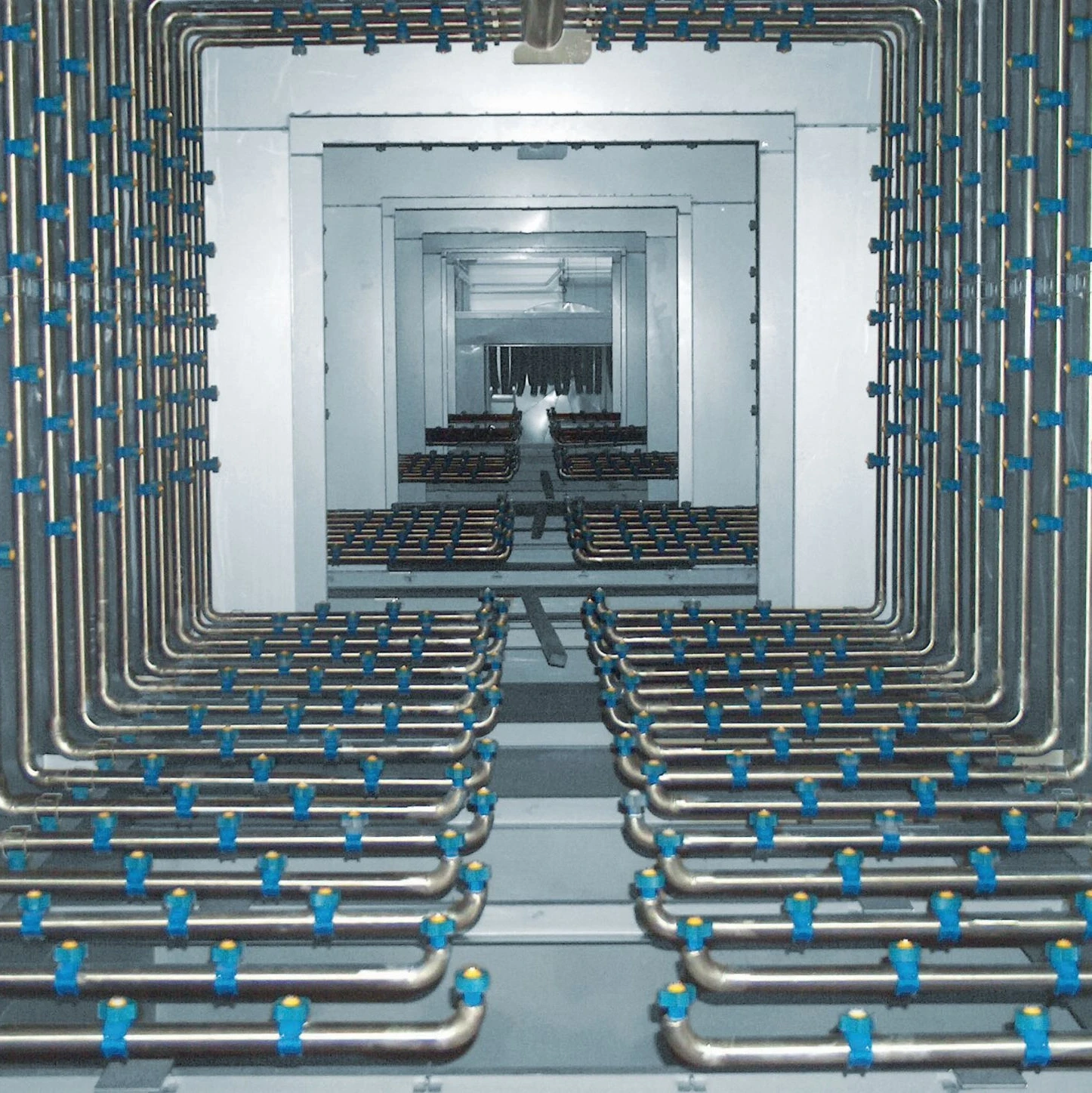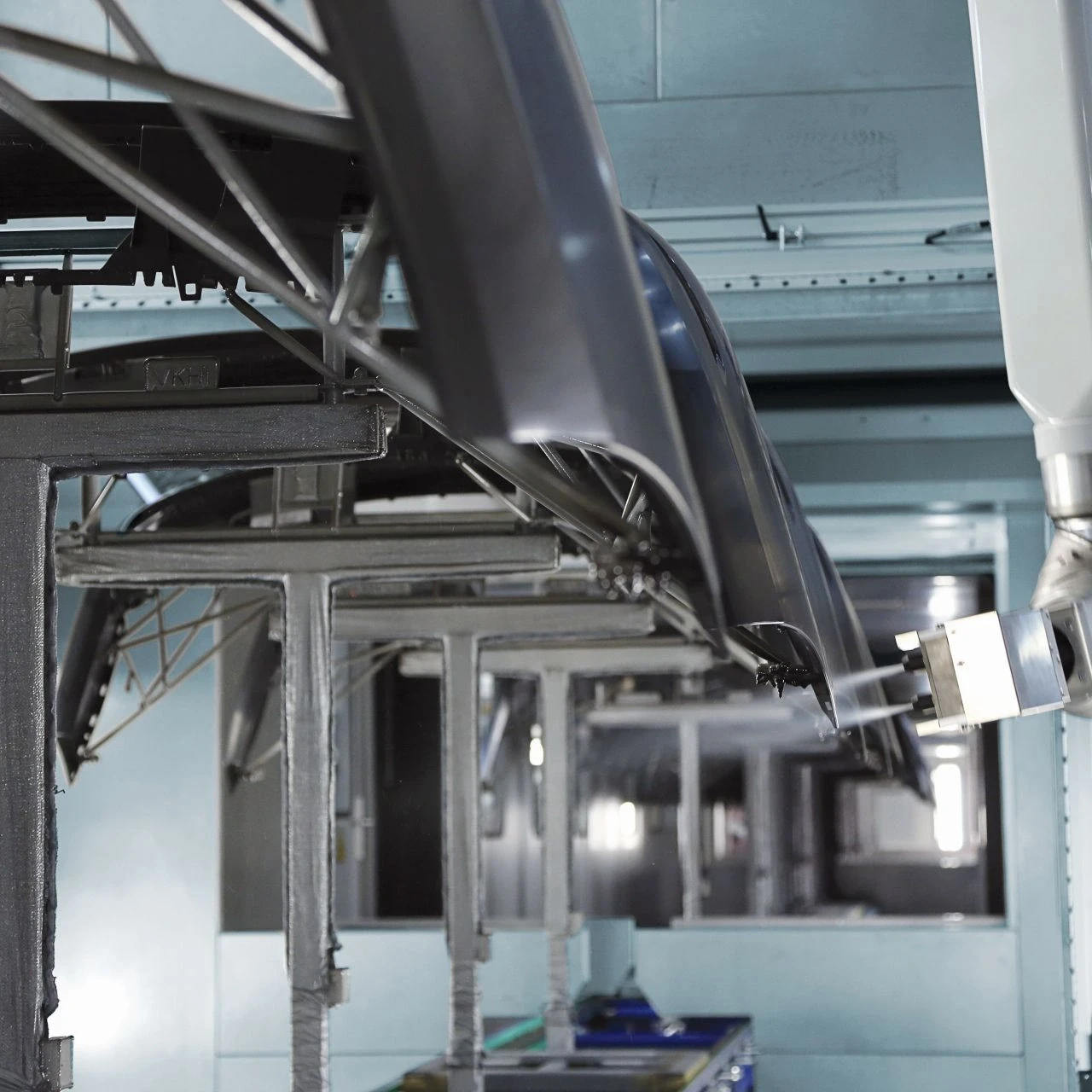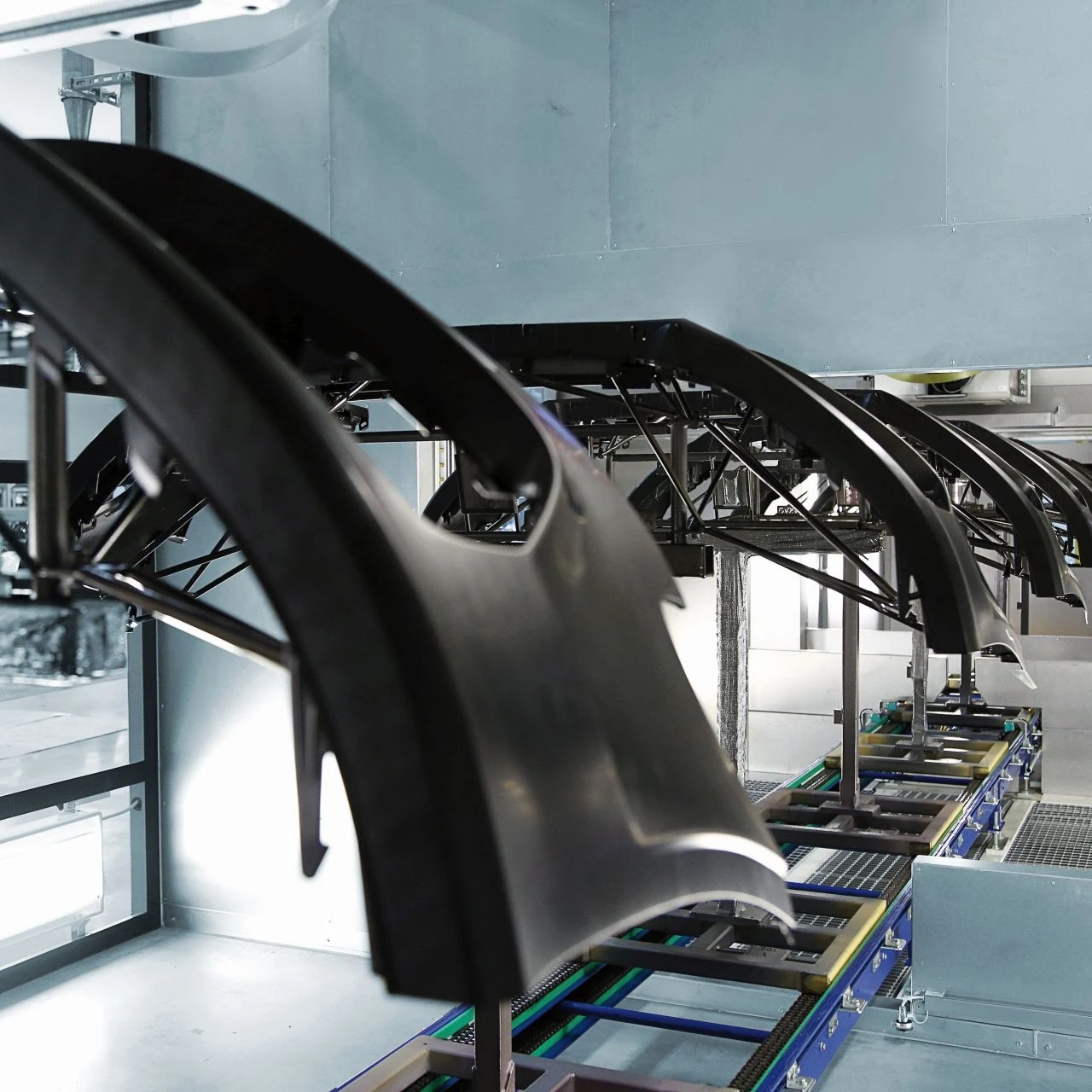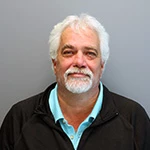Optimum pretreatment
How do you get the best possible quality in the painting process? Pretreatment.
The Powerwash technology can be used for all types of cleaning. The parts are first degreased and then repeatedly rinsed. A combination of tilting, vibrating tables and air blow zones effectively removes moisture from component surfaces – this ideally prepares the components for the next steps in the drying process.
Residue-free drying is ensured through the next steps in the drying process. Parts are blown off with air before proceeding to a dry-off oven. Parts then finish in a cooling zone.
The method is suitable for removing light contamination. It effectively cleans parts with both liquid and cryogenic CO2. Foreign matter that is removed from the component is separated from the CO2. The chemical-free and waterless process eliminates the need for an oven and a downstream cooling zone. This process saves both, space and energy costs. No energy is required for heating a scrubbing solution or for operating the oven and pumps.
